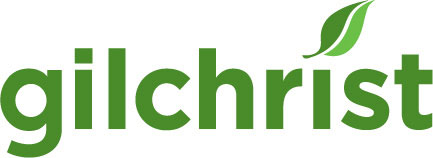A Closer Look at Gilchrist’s Gemba Philosophy
A Closer Look at Gilchrist’s Gemba Philosophy
Gemba is a term derived from the Japanese word “Gemba” or “Gembutsu” that translates to “the real place” or “the actual place.” Gemba Walks were first developed in the early 1990s by Toyota as they were striving to streamline production through their Total Quality Management (TQM) initiative. One of the main objectives Toyota had was to ensure the highest quality products and services while improving production efficiency and reducing costs. Now, many company leaders utilize the Gemba method by evaluating operations, identifying potential problems, and gaining insights into how they might be improved.
While healthcare and car manufacturing are vastly different, like Toyota, Gilchrist also utilizes a “healthcare adapted version” of the Gemba method to continue to improve as an organization. “You can’t cookie cutter something and expect it to work in every scenario. What works really well in manufacturing maybe doesn’t work as well in health care…people have individual needs and changes-it’s just a different product,” says Evelyn Bowmaster, Senior Director Quality & Patient Safety, Ambulatory Services & Gilchrist.
For almost 10 years, Gilchrist has been adapting and implementing the Gemba method to observe, evaluate, and improve processes, workflows, and patient experiences. Over twenty-five departments at Gilchrist meet from weekly to monthly for Gemba Walks. “We’re really studying the organization through the science of performance improvement. It’s taking it out of the boardroom, into the hands of the workers who actually perform the tasks, because they’re the ones that can actually really know what isn’t working and what will probably help so it’s incorporating all staff into the process. Through that work, there’s tests of change,” says Bowmaster.
Here’s why the concept of the Gemba method is important at Gilchrist:
- It helps us identify issues and gain valuable insights on how to improve them so we can introduce changes that can be more easily embraced by workers.
- Quality Improvement: Observing care processes allows for the identification of inefficiencies or areas where quality can be improved. This firsthand knowledge enables us to make real-time adjustments and enhancements to the care we provide thus optimizing resource allocation and improving overall efficiency.
- It helps create standard work practices and ensures they are effective.
- We are able to hear from employees about what is important to them and what problems they see.
- It aligns departments and teams with the organization’s overall goals/objectives and allows us to discuss them with employees.
- It cultivates a culture of improvement, communication, openness, collaboration, teamwork, and shared understanding among staff members, leading to improved care coordination.
- It helps our staff focus on purpose, process, and patients by promoting a culture of continuous learning and improvement. The Gilchrist staff regularly have opportunities to learn from their experiences, patient feedback, and each other, which can lead to ongoing enhancements in the quality of care.
“I think that Gemba is building a culture of problem solvers throughout the organization at every level. Every employee at Gilchrist is valued and their opinions and thoughts are valued. We want to make sure we highlight that the problem solving is coming from those who are doing the work for not only the good of the patients and families, but also for the greater good of the organization,” Bowmaster says.
The Gemba method at Gilchrist encourages a patient-centered, quality-focused, and continuous improvement approach to care delivery ensuring our patients experience the best possible quality of life and the opportunity to live every moment to its fullest.


